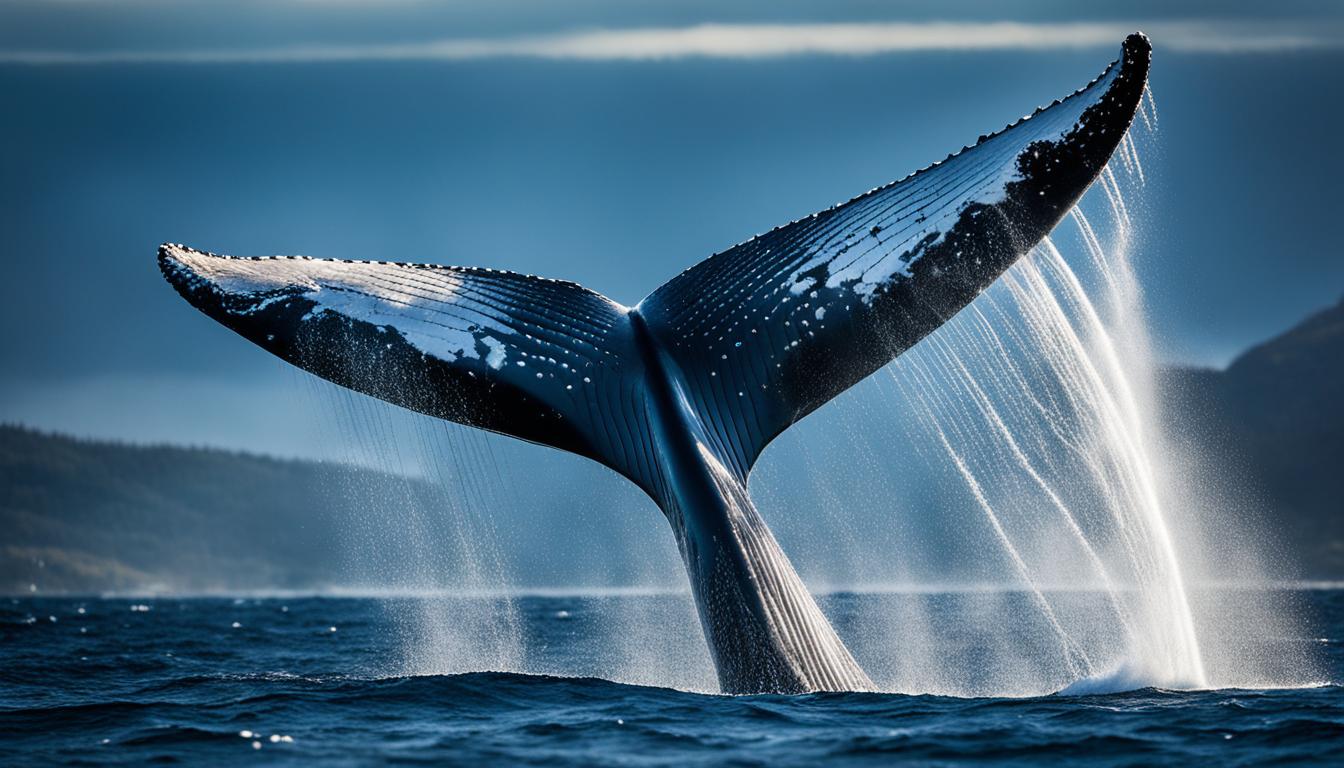Do you know indoor plants make the air better? They can also lower stress and help you focus. NASA found some plants clean toxic stuff from the air. This makes your home healthier. The Whale Fin plant is a top pick for indoor spaces.
This guide will tell you everything about the Whale Fin plant. I’ll talk about how it looks, how to take care of it, how to make more plants, and how to keep bugs away. Follow this advice to make your Whale Fin happy at home. Additionally, it’s important to ensure that your Whale Fin plant receives the right amount of sunlight, as too much or too little can affect its growth. For those who are also interested in other succulent care, don’t miss out on the sedum burro’s tail care tips, which emphasize the need for proper watering and well-draining soil. With the right conditions, your Whale Fin will thrive and bring a unique touch to your indoor garden.
Key Takeaways:
- Indoor plants can make air cleaner and help you feel better at home.
- The Whale Fin plant is a favorite for people who love indoor plants.
- This complete guide will help you take good care of a Whale Fin plant.
- You will learn about the plant’s look, how to care for it, how to grow more, and how to handle bugs.
- Using this guide, you can make a green and lively indoor garden with the Whale Fin plant.
Why Do We Love the Whale Fin For Apartments?
Plant lovers pick the Whale Fin for their apartments. It looks great and brings calm. With its big, green leaves, it makes homes look and feel tropical.
Is the Whale Fin Air-Purifying?
The Whale Fin can clean the air. It takes in bad air and gives out clean air. This helps make your home a healthier place.
Is the Whale Fin Pet Friendly?
Pets and the Whale Fin get along well. It’s safe and won’t hurt your pets. But, keep an eye on your pets with the plant.
How Big Does the Whale Fin Get?
The Whale Fin’s size can change with care. It can grow big and tall. Its big leaves make any room look better.
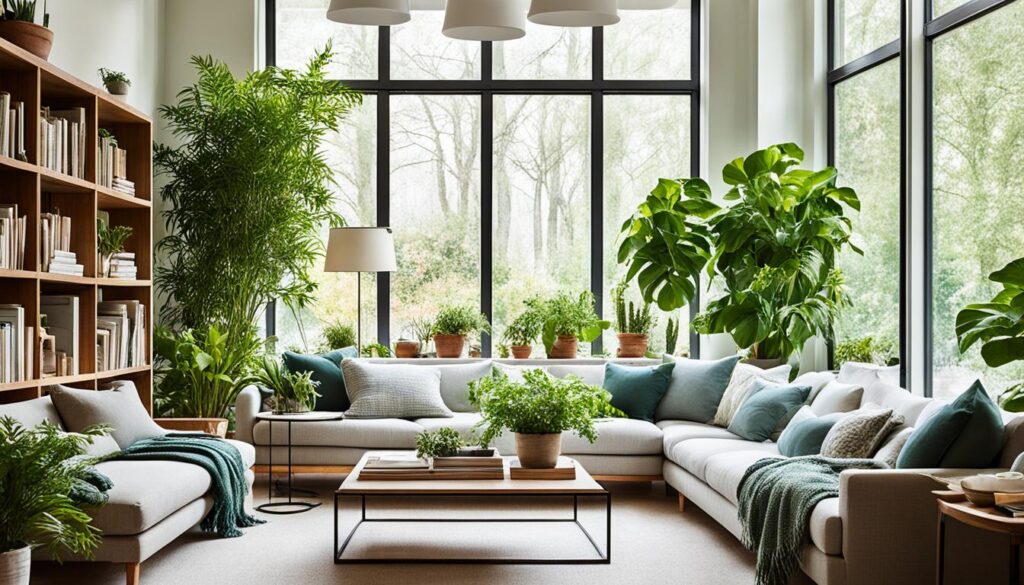
| Feature | Description |
|---|---|
| Air-purifying | The Whale Fin has the ability to filter and purify indoor air, creating a healthier environment. |
| Pet-friendly | This plant is considered safe for pets, allowing you to enjoy its beauty without worrying about your furry friends. |
| Size | The Whale Fin can grow to several feet tall, making it a striking focal point in any apartment. |
How to Grow a Whale Fin – Learn to Grow this Indoor Beauty
I’ll show you how to grow a lovely Whale Fin plant at your place. We’ll look into choosing pots and soil, getting the light right, how to water, keeping it humid, feeding it, trimming it, making more plants, and keeping bugs and sickness away.
Choosing the Right Pot and Soil
Picking a good pot and soil is key for your Whale Fin plant to thrive. Use a pot that lets water out to stop roots from getting too wet. Find a soil that drains well but still holds nutrients for your plant.
Providing Adequate Light
Whale Fin plants need bright, indirect sunlight. Put it by a window that faces north or east for the best light. If there’s not enough sun, you can use special plant lights to help it grow.
Watering and Humidity
Watering right is important for your plant’s health. Let the soil’s top layer dry before watering deeply. Keep the air around it moist by misting or using a humidifier.
Nutrition and Fertilization
Feed your Whale Fin plant every 2-4 weeks when it’s growing. Use a balanced fertilizer and follow the package for how much to use. This helps your plant stay healthy and look great.
Pruning and Maintenance
Trim your plant to keep it looking nice. Cut off any yellow or dead leaves to help it grow more. Wipe the leaves to remove dust and keep them shiny.
Propagation
You can make new Whale Fin plants from stem cuttings. Pick a good stem, take off the bottom leaves, and plant it in good soil. Keep it warm and moist, and soon it’ll grow roots.
Monitoring for Pests and Diseases
Check your plant for bugs or diseases often. Look out for spider mites, mealybugs, and aphids. Use safe soap or neem oil to get rid of bugs. To stop diseases, make sure your plant has fresh air and don’t overwater it.
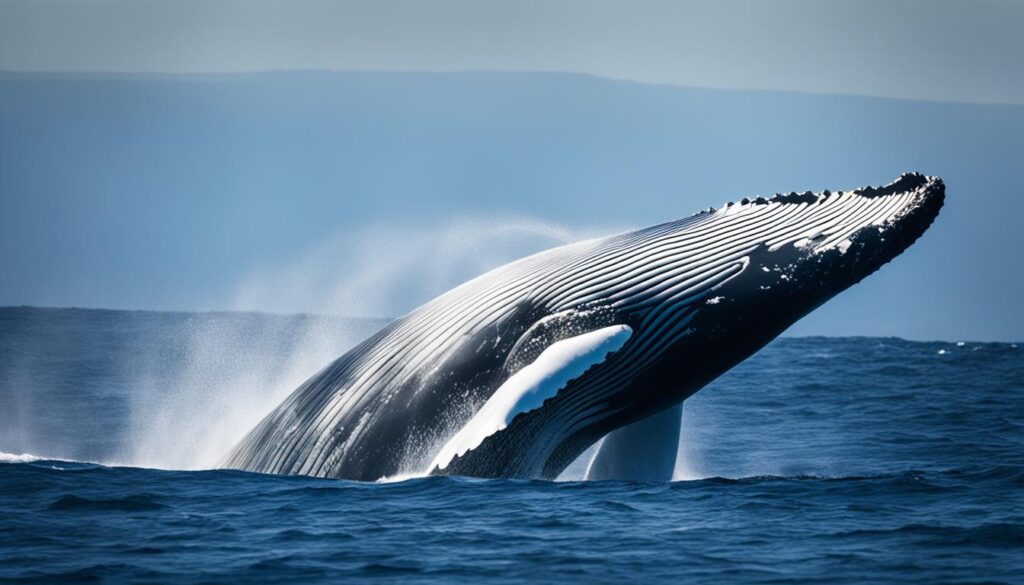
| Growing Tips | Result |
|---|---|
| Provide adequate light | Lush and healthy foliage |
| Proper watering and humidity | Prevents root rot and promotes healthy growth |
| Nutrition and fertilization | Vibrant foliage and strong growth |
| Regular pruning and maintenance | Maintains shape and appearance |
| Successful propagation | Expands your plant collection |
| Effective pest and disease control | Maintains plant health and vitality |
Appearance of Whale Fin
The Whale Fin plant stands out from other indoor plants. Its long, paddle-shaped leaves make it unique.
These leaves are a deep dark green. This adds beauty and contrast to any indoor area.
Whale Fin’s leaves look like whale fins, which is how it got its name. They grow in a pattern that seems to move and adds elegance.
Each leaf feels smooth and can be quite big. They range in size from a few inches to over a foot.
Its deep green color makes the Whale Fin look vibrant and healthy. This green color fits well with any room’s look.
The Whale Fin grows neatly, which is great for small spaces. It can stay small or grow big, depending on how you take care of it.
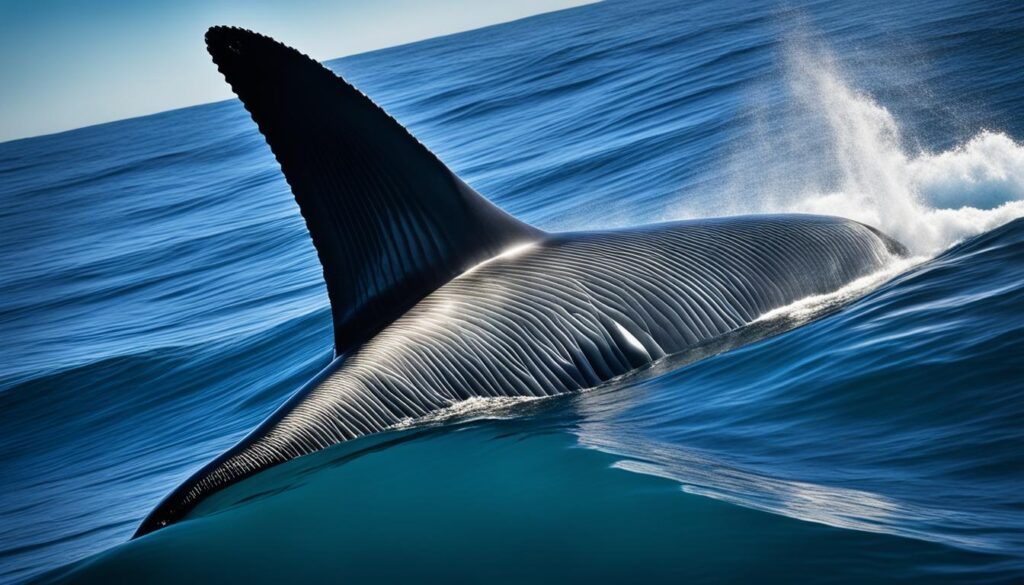
Image of a Whale Fin plant, showcasing its unique appearance and vivid leaf color.
| Leaf Shape | Leaf Color | Growth Habit |
|---|---|---|
| Paddle-shaped | Dark green | Orderly and compact |
Light Requirements for Whale Fin
Plants indoors, like the Whale Fin, need good light to grow and be healthy. How much light they get changes how well they do. This part talks about what light the Whale Fin needs. It also tells you how to make sure it gets enough light at home.
It’s key to give Whale Fin the right amount of light. It loves bright, indirect light. A good spot is near a window with no direct sun. Direct sun can harm its leaves.
If your place is dark, add some artificial lights. LED or full-spectrum lights work well for the Whale Fin. Put the lights a bit above the plant. Leave them on for 12-16 hours to copy daylight.
Light needs can change based on where you live. Things like your home’s direction, other buildings, and trees play a role. Keep an eye on your plant. Change things as needed to help it grow well.
Watering Requirements of the Whale Fin
Watering the Whale Fin plant right is very important. It keeps the plant healthy and growing well. This part explains when and how much to water the Whale Fin. It also tells you what happens if you water too much or too little.
Signs of Overwatering vs. Underwatering
Too much or too little water is bad for the Whale Fin plant. You need to find the perfect amount for it to grow best. Here are things to look for:
- Overwatering: Too much water causes root rot and other wetness problems. Signs of too much water include leaves turning yellow, wilting, stems that are mushy or soft, a bad musty smell, and fungus gnats around.
- Underwatering: Not enough water makes the Whale Fin’s leaves curl, turn brown, and get dry and brittle. The plant might also wilt and look very thirsty with droopy leaves and not much energy.
It’s important to check how wet the soil is. This helps you know when to water your plant. As you do this more, you’ll get better at knowing just what your Whale Fin needs.
To make sure you water just right, try the “finger test.” Poke your finger about an inch into the soil. If it’s dry, water your plant. If it’s moist, wait before watering again.
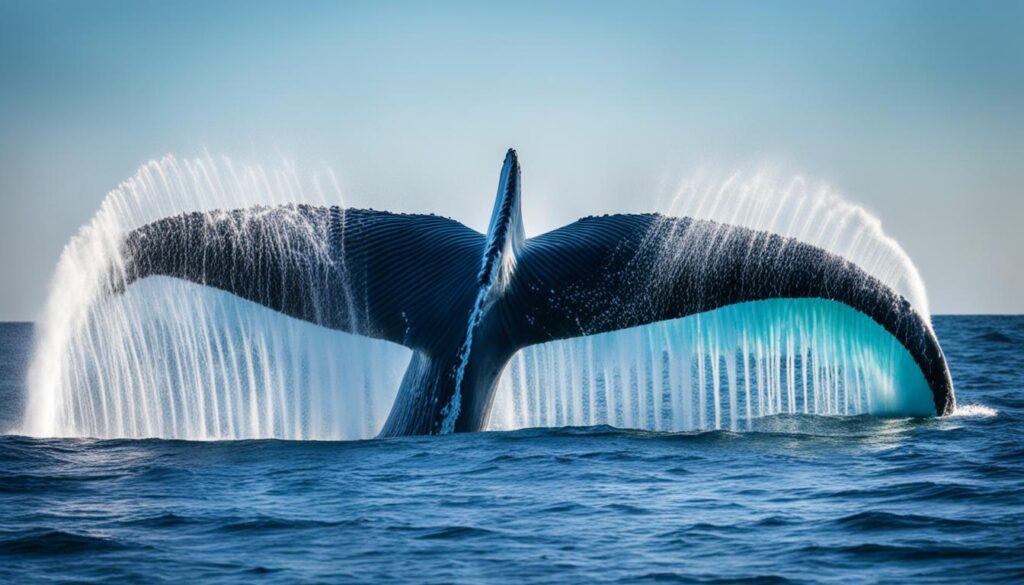
| Signs of Overwatering | Signs of Underwatering |
|---|---|
| Yellowing leaves | Curled and brown leaves |
| Wilting | Dry and brittle foliage |
| Mushy or soft stems | Wilting and drooping |
| Strong musty odor | Extreme thirst and lack of vigor |
| Presence of fungus gnats |
Fertilizing a Whale Fin
Fertilizing your Whale Fin plant is very important. It helps it grow strong and look bright. I will talk about how fertilizing helps your Whale Fin. I will also tell you what kinds of fertilizers are best.
Recommended Fertilizer for a Whale Fin
It’s important to pick the right fertilizer for your Whale Fin. A balanced liquid fertilizer works well. It should have equal parts nitrogen, phosphorus, and potassium.
You could also use a slow-release fertilizer made for indoor plants. It feeds your plant slowly, which is good. This way, there’s less chance of giving it too much.
Be sure to use fertilizer the right way. Too much can hurt your plant. Too little means it won’t grow well.
In spring and summer, fertilize once a month. In fall and winter, do it every 6 to 8 weeks. Make sure the soil is a bit wet before you start.
Use the right amount of fertilizer for your plant’s size and age. It’s okay to start with a little and add more if you need to.
Sometimes, give your plant extra treats like fish emulsion or seaweed extract. These give more nutrients that are very good for your plant.
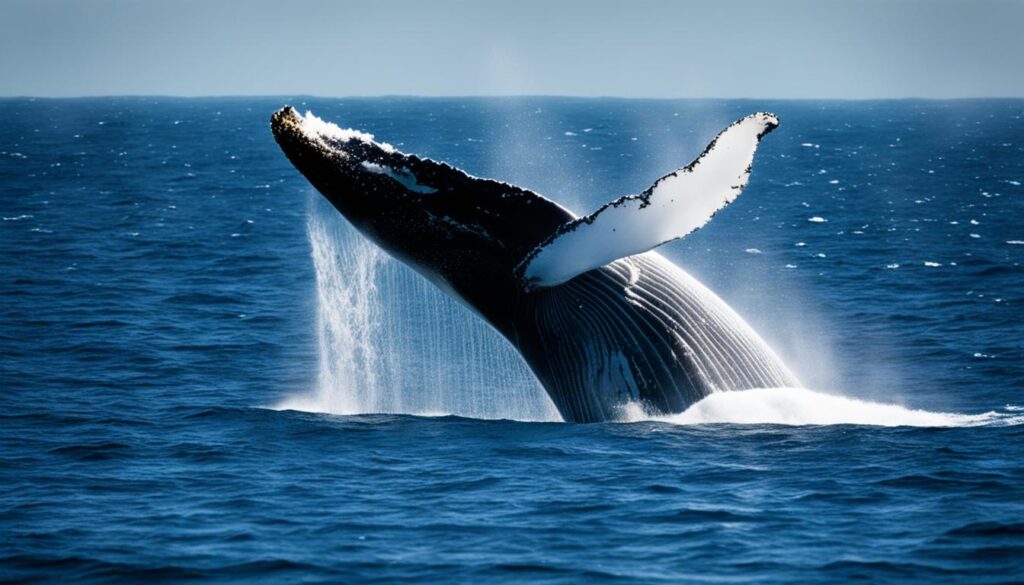
| Fertilizer Type | Recommended Frequency | Application Method |
|---|---|---|
| Liquid Balanced Fertilizer (10-10-10 or 20-20-20) | Once a month during the growing season | Mix the recommended dosage in water and apply directly to the soil |
| Slow-Release Indoor Plant Fertilizer | Every 6 to 8 weeks during the growing season | Follow the manufacturer’s instructions for application method |
| Organic Fertilizers (Fish Emulsion, Seaweed Extract) | Occasional supplementation | Follow the manufacturer’s instructions for application method |
By using the best fertilizers the right way, your Whale Fin will grow strong and look amazing.
Potting a Whale Fin
Proper potting keeps your Whale Fin plant healthy. I will guide you on how to pot it well.
Choosing the Right Pot Size
Pick a pot 1-2 inches bigger than the current one for your Whale Fin. This gives roots space to grow. A too small pot can stop roots from growing right.
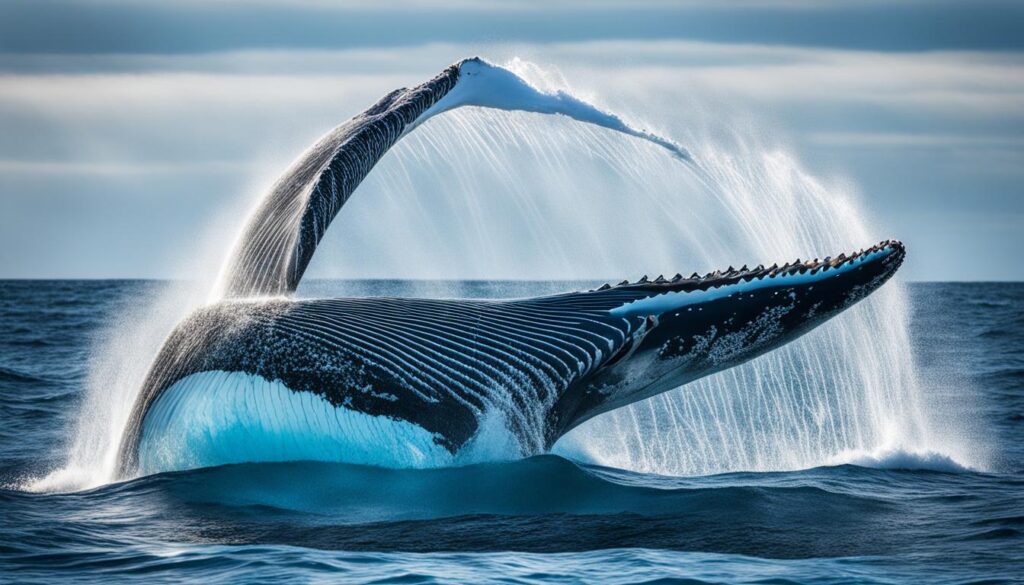
Using the Right Potting Mix for a Whale Fin
A good potting mix gives the Whale Fin what it needs. Use soil, peat moss, and perlite. It helps roots breathe and stops water from harming the plant.
Repotting When Necessary
If your Whale Fin gets too big, it’s time for a new pot. Look for roots that circle the pot or fill it up too much. Move the plant in spring or early summer.
These potting tips help your Whale Fin grow well inside.
Propagating a Whale Fin
Expanding your indoor plant collection is fun with the Whale Fin plant. You can use stem cuttings, seeds, or its division for mature plants.
Stem Cuttings Or Seeds?
Propagating Whale Fin through stem cuttings: A common way to grow a Whale Fin is using stem cuttings. Take a healthy stem and place it in a growing medium. This way, you get a new plant that is just like the parent.
Propagating Whale Fin from seeds: Growing from seeds is another way. It takes longer but is rewarding. Sow mature seeds in a potting mix, then wait. With care, little seedlings will pop up.
Division Of A Whale Fin
Dividing a mature Whale Fin: Division works for big plants. Carefully take the plant out and divide the root ball. Each section should have roots and stem. Pot each piece in its own container.
Stem cuttings, seeds, or division let you enjoy more Whale Fins. Try different methods. Find what works best for you.
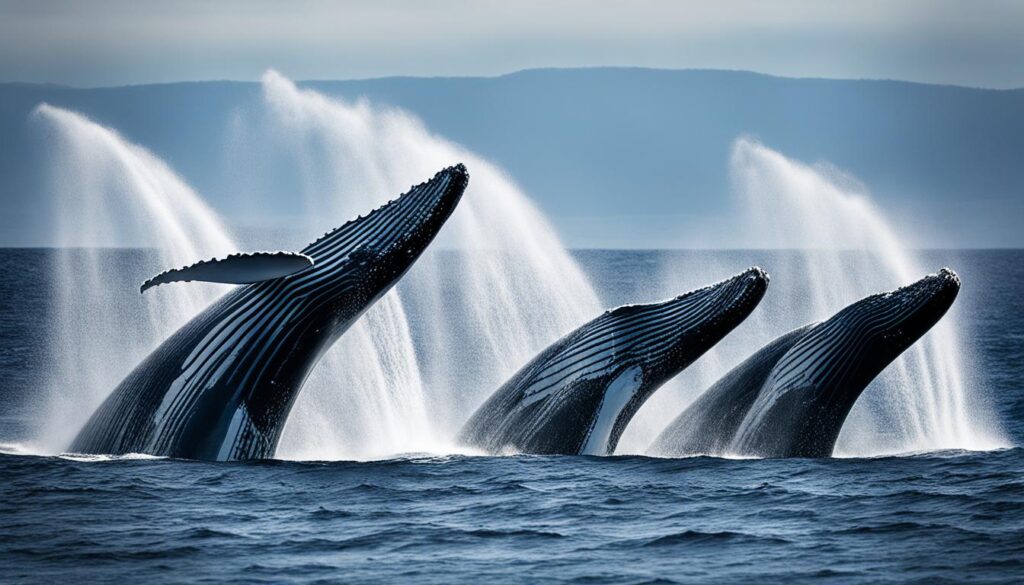
Growth and Development of the Whale Fin
Learning about the Whale Fin plant’s growth helps us take good care of it. This plant grows well inside and has its own growth steps. It becomes as big as it can.
The Whale Fin plant grows steadily if we take care of it right. It grows slow and steady but you can see the changes. It likes being inside and is a top pick for people who love plants.
The Whale Fin can get really tall with the right care. It can grow up to several feet. Its big, flat leaves make it look unique and beautiful in your home.
How fast the Whale Fin grows can change based on a few things. These include where it lives, how you care for it, and its health. Usually, you’ll see it start to grow bigger in the first few months at your place. As years pass, it gets even more lovely, making your home prettier.
If you want to see how the Whale Fin grows, check out this picture:
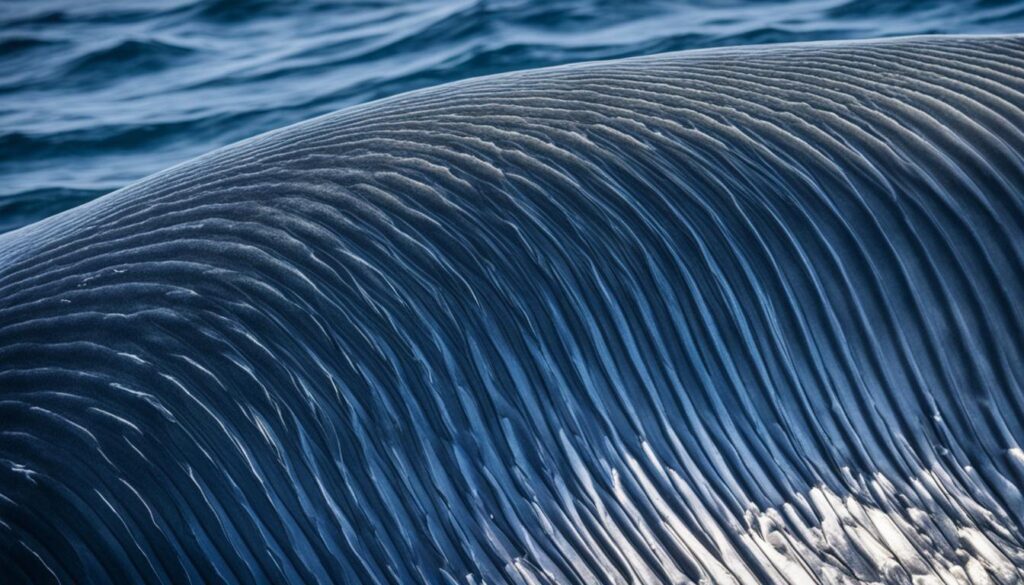
Dealing with Pests and Diseases in the Whale Fin
The Whale Fin can get sick like any plant. It’s key to stop and fix these problems for a healthy plant. Here, we will talk about common pests and diseases. We’ll also cover how to take care of your plant.
Pests: Spider Mites can harm your Whale Fin. They eat the leaves, turning them yellow. To stop Spider Mites, clean your plant with water often. Watch out for Mealybugs too. They hide in leaves and slow the growth. Remove Mealybugs with alcohol on a cotton swab. Or, use a soap spray.
Diseases: The Whale Fin can get Leaf Spot and Leaf Blight. Leaf Spot shows as small dark spots from fungi or bacteria. Don’t overwater and keep air moving to avoid Leaf Spot. Leaf Blight makes big brown spots on the leaves. It comes from fungi. Get rid of sick leaves fast to stop the disease.
Spot problems early for best plant care. Look for signs like drooping, yellow leaves, or spots. Keep the plant watered right and in good light. Make sure the air around it flows well. This helps keep the plant safe from pests and diseases.
Always care for your plant well. Clean and check it often to avoid pests and diseases. If you see any issues, act fast. Fixing problems quickly is the best way to keep your Whale Fin healthy.
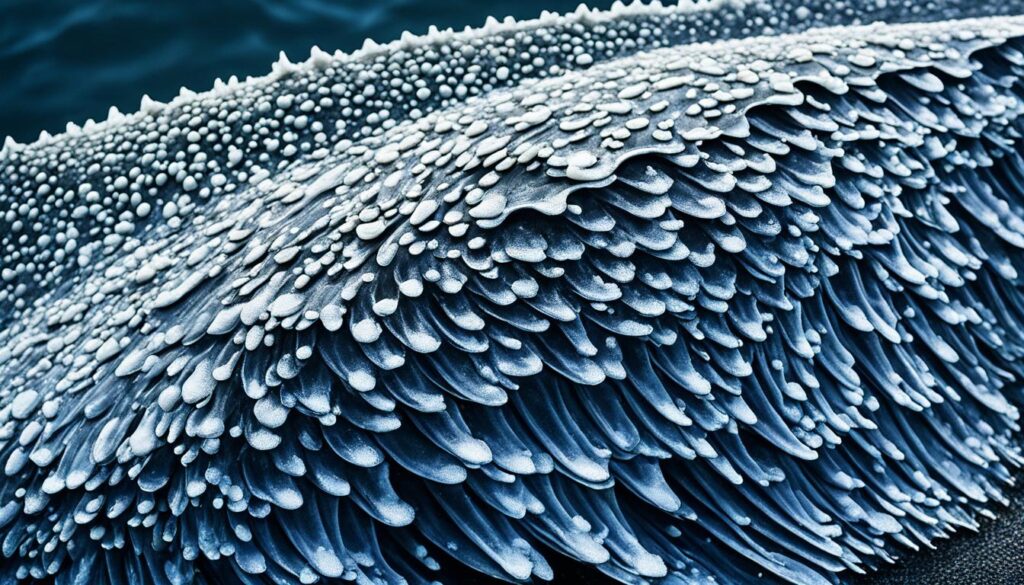
Common Whale Fin Pests
The Whale Fin plant can have pest problems. These problems can harm its growth and health. It’s important to know these pests. Also, how to handle them.
Some usual pests that bother the Whale Fin include:
- Aphids: These small insects feed on the sap of plants and can cause leaf curling, yellowing, and stunted growth.
- Spider mites: These tiny pests create fine webbing on the leaves and cause yellow spots and visible damage.
- Mealybugs: These white, cotton-like insects feed on plant sap and can cause stunted growth and leaf distortion.
- Scale insects: These small, oval-shaped pests attach themselves to the leaves and stems, sucking out plant sap and causing yellowing and leaf drop.
- Fungus gnats: These small, flying insects lay their eggs in the soil, and the larvae feed on the plant’s roots, leading to root damage and poor growth.
To fight and stop these pests, you must:
- Regularly check the leaves and stems of your Whale Fin for signs of infestation.
- Gently wash the plant with a mild soap and water solution to remove pests.
- Use natural remedies like neem oil or insecticidal soap to control and deter pests.
- Keep the plant in optimal health by providing proper care, such as adequate light, watering, and fertilization.
- Isolate any infested plants to prevent the spread of pests to other indoor plants.
Natural Predators
Nature helps control pests on your Whale Fin plant.
Predatory insects keep pest numbers low. This reduces the need for chemicals.
Isolate Infected Plants
See pests on your Whale Fin? Act fast to stop them from spreading.
Move sick plants away from healthy ones. Watch them for more pest signs.
Chemical Treatment
Sometimes, you might need chemicals to fight pests.
But use them carefully and only as a last choice. Follow the maker’s directions well.
Looking after your plants well helps prevent pests. Use nature’s helpers and act early.
Disease Prevention For Whale Fins
Keeping your Whale Fin plant healthy is very important. With the right care, you can stop diseases and help it grow.
Here’s how you can keep your Whale Fin plant disease-free:
- Ensure your indoor environment is suitable for the Whale Fin, providing adequate temperature, humidity, and air circulation.
- Regularly inspect your plant for any signs of disease, such as wilting, discoloration, or unusual growth patterns.
- Practice good plant hygiene by cleaning the leaves periodically to remove dust and debris that can attract pests or create a favorable environment for diseases.
- Avoid over-watering your Whale Fin, as excess moisture can lead to root rot and other fungal diseases. Instead, water the plant only when the top inch of soil feels dry.
- Provide proper nutrition to your Whale Fin through regular fertilization, following the recommended guidelines for indoor plants.
- Inspect new plants or cuttings before introducing them to your Whale Fin to prevent the spread of pests and diseases.
- Isolate any infected plants to prevent the spread of diseases to healthy plants.
- If necessary, consider using organic pest control methods or targeted treatments to address specific diseases or infestations.
By taking these steps and keeping an eye on your plant, you can make a great home for your Whale Fin.
Tips for Maintaining Whale Fins
Maintaining your Whale Fin plant keeps it healthy and lively. Follow these tips to make your indoor plant thrive and look great. We will look at leaf care, outdoor time, and water schedule.
Wiping Leaves
Whale Fins have big, beautiful leaves that need regular cleaning. Dust and dirt can stop them from getting sunlight. This makes the plant look less vibrant. Wipe the leaves with a wet cloth often to keep them shiny.
Outdoor Exposure
Whale Fins usually stay inside but like occasional outdoor time. Take your plant outside when the weather is nice. Put it in a spot without direct sunlight. Too much sun can harm the leaves. Outdoor air and light can make your Whale Fin grow better.
Adjusting Watering Schedule
The Whale Fin’s water needs change with the temperature, humidity, and seasons. Check the soil’s wetness often. Change how much you water based on this. Water more in hot months to keep the soil moist. Water less in cold months to let the top soil dry. Right watering helps the plant stay healthy.
Follow these Whale Fin care tips for a happy and beautiful plant. Your Whale Fin plant will look good and live long.
Tips for Successful Overwintering of Whale Fin
It’s important to take good care of your Whale Fin plant in the cold months. To keep your indoor plant happy, here are some easy tips:
| Tip | Description |
|---|---|
| 1. | Adjust the temperature: Keep the Whale Fin in a place that’s 60-75 degrees Fahrenheit (15-24 degrees Celsius). Make sure it’s not in a very cold spot. |
| 2. | Provide adequate light: Your Whale Fin still needs light in winter. Put it by a window that gets lots of sun. |
| 3. | Monitor humidity levels: The air inside gets dry when it’s cold. Use a humidifier or a water tray to add moisture for the Whale Fin. |
| 4. | Reduce watering frequency: In winter, the Whale Fin doesn’t grow much. Water it less, waiting for the soil to dry on top first. |
| 5. | Limit fertilizer application: The plant needs less food in winter. Use less fertilizer to avoid giving it too much. |
| 6. | Protect from cold drafts: Keep your Whale Fin away from cold windows or doors. This helps it stay warm. |
| 7. | Inspect for pests: Look out for bugs in winter. If you see pests, use safe bug spray right away. |
Follow these tips to keep your Whale Fin plant looking its best in winter. Watch your plant and change as needed for the best care.
Growing Whale Fin from Seed
It’s fun to grow a Whale Fin plant from seeds. I’ll show you how to do it, from picking seeds to caring for tiny plants.
First, pick good seeds. You can buy them or use seeds from your own Whale Fin. Choose seeds that are big, firm, and healthy-looking.
Now, get your seeds ready to grow. Put them in a tray or pots with special soil. Make the soil a bit wet.
Put the seeds on the soil, not too close to each other. Push them down so they touch the soil. Then, cover them with a little more soil or vermiculite.
Next, make sure the seeds are warm and get light but not direct sun. They should be kept at about 70-75°F (21-24°C).
Keep the soil damp while you wait for the seeds to grow. Use a water spray to be gentle. The seeds will start to grow in 1-3 weeks.
When you see the plants, they need light. Put them where it’s bright or use a light for plants. Slowly, let them get used to more light.
As the plants get bigger, take good care of them. Water them when the soil gets dry. Keep the air around them a bit moist.
When the plants are bigger with real leaves, put them in their own pots. Be careful with their roots.
Keep looking after them with enough light, water, and moist air. Move them to bigger pots when needed. Watch out for bugs or sickness and help them if needed.
If you take care and be patient, your Whale Fin plants will grow big and beautiful. They will make your home look nice.
Varieties of Whale Fin
The Whale Fin plant is known for its unique look. It has lush leaves and comes in many types. Each type has its own special traits. They are great for people who love plants and for adding beauty to indoor spaces.
One type people love is the Syngonium podophyllum ‘Albo-Variegatum’. It’s also called the Variegated Whale Fin. It has big leaves that look like paddles. These leaves are green and white. They make any room look more interesting and colorful. This plant is a favorite.
Another type is the Syngonium podophyllum ‘Bronze’, or the Bronze Whale Fin. This plant’s leaves are bronze then turn dark green. It’s a flexible plant that fits with many decorating styles. It adds warmth and style to any place.
The Syngonium podophyllum ‘Pixie’ is another great choice. It’s a small version of the Whale Fin. It has little heart-shaped leaves that are a deep green. The Pixie Whale Fin is perfect for small spaces. It’s a cute part of any plant collection.
FAQ
Q: Why do people love the Whale Fin plant for apartments?
A: People love it because it looks lush and tropical. It makes homes lovely and peaceful.
Q: Is the Whale Fin plant air-purifying?
A: Yes, it cleans the air. It makes the air in your home better.
Q: Is the Whale Fin plant safe for pets?
A: It’s usually safe, but keep pets away. They shouldn’t chew on it.
Q: How big does the Whale Fin plant get?
A: The Whale Fin plant gets really big. Its leaves can grow several feet long.
Q: How do I choose the right pot and soil for my Whale Fin plant?
A: Choose a pot with holes for water to escape. Use soil that doesn’t hold too much water.
Q: How much light does the Whale Fin plant need?
A: It loves bright, indirect light. Keep it near a window but out of direct sun.
Q: How often should I water my Whale Fin plant?
A: Water it when the top inch of soil dries. How often depends on the air and soil.
Q: What fertilizer should I use for my Whale Fin plant?
A: Use a balanced fertilizer like 20-20-20. Follow what the package says.
Q: How do I pot a Whale Fin plant?
A: Pick a bigger pot. Use draining soil. Make sure it sits like it did before.
Q: How can I propagate a Whale Fin plant?
A: Cut stems from a healthy plant or divide it. This works if it’s too big for its pot.
Q: What are the common pests and diseases that can affect the Whale Fin plant?
A: Watch out for spider mites, mealybugs, and scale. Root rot and leaf spot can also happen.
Q: How can I identify and control pests on my Whale Fin plant?
A: See pests? Use safe soap or neem oil. Check your plant often and keep sick ones alone.
Q: Are there natural predators that can help control pests on the Whale Fin plant?
A: Yes, ladybugs and lacewings can eat pests. If it’s bad, you might need chemicals.
Q: How can I prevent diseases in the Whale Fin plant?
A: Keep it happy with light and don’t overwater. Clean leaves and get rid of dead parts.
Q: What tips can you share for maintaining a healthy Whale Fin plant?
A: Clean its leaves and let it get fresh air. Change watering based on its needs.
Q: How do I overwinter a Whale Fin plant?
A: Keep it warm and moist in winter. Water less and protect it from cold drafts.
Q: How can I grow a Whale Fin plant from seeds?
A: Start with fresh seeds. Plant them in good soil. Give them the right heat and moisture.
Q: What are the different varieties of the Whale Fin plant?
A: There are many types. They have different leaf colors and shapes.

